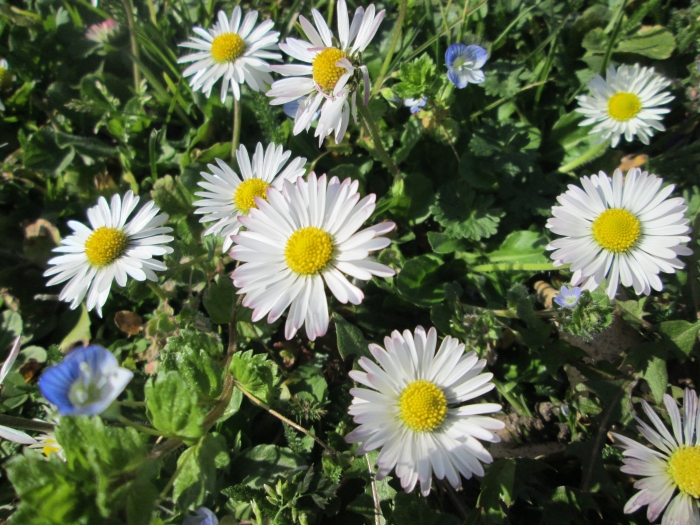Lawn Daisy
(Bellis perennis)
Lawn Daisy (Bellis perennis)
/
/

AnRo0002
CC0






















































Estimated Native Range
Summary
Lawn Daisy is valued for its dainty white, pink, or red flowers with yellow centers and its long flowering season. It is often used as a ground cover, in rock gardens, and for naturalizing areas. It is low-maintenance, requiring little care once established, and is generally free from serious insect or disease problems. It thrives in a range of well-drained soils and prefers full sun to part shade. While it can be propagated by seeds or division, care should be taken as it can become invasive outside its native range, particularly in Europe, West Asia, North Africa, and North America. Gardeners should check local regulations before planting to prevent unwanted spread.CC BY-SA 4.0
Plant Description
- Plant Type: Herb
- Height: 0.3-0.5 feet
- Width: 0.3-0.8 feet
- Growth Rate: Moderate
- Flower Color: White, Pink
- Flowering Season: Spring, Summer
- Leaf Retention: Evergreen
Growth Requirements
- Sun: Full Sun, Part Shade
- Water: Medium
- Drainage: Slow, Medium, Fast
Common Uses
Bank Stabilization, Bee Garden, Bird Garden, Border Plant, Butterfly Garden, Deer Resistant, Edible*Disclaimer: Easyscape's listed plant edibility is for informational use. Always verify the safety and proper identification of any plant before consumption., Groundcover, Low Maintenance, Potted Plant, Rock Garden, Showy Flowers, Street Planting
Natural Habitat
native to a variety of habitats including meadows, open grassy areas, and along forest edges in Europe, North Africa and Western Asia
Other Names
Common Names: Daisy, Double Daisy, Lawndaisy, English Daisy, Perennial Daisy, Common Daisy, Black Ironwood, Woundwort, Tusindfryd, Gänseblümchen
Scientific Names: , Bellis perennis, Bellis perennis subsp. perennis, Bellis hybrida, Bellis perennis var. caulescens, Bellis perennis var. perennis, Bellis hortensis, Bellis pumila, Bellis integrifolia, Bellis perennis f. discoidea
GBIF Accepted Name: Bellis perennis L.